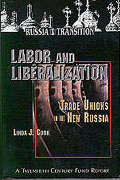Studies in this week’s Hutchins Roundup find that central banks should account for house prices when setting monetary policy, allowing workers to draw Social Security at age 62 increased poverty in old age, and more.
Want to receive the Hutchins Roundup as an email? Sign up here to get it in your inbox every Thursday.
Central banks should account for house prices when setting monetary policy
The 2008 financial crisis rekindled a debate about how central banks should respond to asset prices. In particular, some people attribute the crisis to the Federal Reserve’s failure to respond preemptively to a housing bubble. Using a model of the macroeconomy, Klaus Adams of the University of Mannheim and Michael Woodford of Columbia show that the Fed’s focus on output and inflation works well when households have the same expectations as policymakers for house prices and inflation. However, if households’ expectations differ from the central bank’s, and if there is an oversupply of housing because housing is subsidized (as it is in the United States), then failing to account for house prices could lead to large welfare losses, they find. Therefore, they argue, central banks should respond to house prices by tightening monetary policy when prices rise unexpectedly and loosening it when prices fall unexpectedly.
Allowing workers to draw Social Security at age 62 increased poverty in old age
In 1961, Congress allowed workers to claim reduced Social Security retirement benefits at age 62, rather than waiting until age 65. Claiming benefits early reduces monthly payments by up to 20 percent. Gary V. Engelhardt of Syracuse University, Jonathan Gruber of MIT, and Anil Kumar of the Federal Reserve Bank of Dallas use data from the Social Security Administration and Current Population Surveys from 1968 to 2001 to determine how this change affected income and inequality. The provision lowered the average age at which benefits are claimed by 1.4 years and lowered average Social Security income by 1.5 percent for male-headed retired households. The impact was larger for households in the bottom 25 percent of the income distribution, reducing their Social Security retirement income by 4 percent on average. Claiming benefits early decreased total income, but only at the bottom of the income distribution, they find. As a result, the legislation increased poverty and inequality among elderly Americans.
Prescription availability rather than economic-related despair drives more opioid use
The rising use of opioids coincided with declining labor force participation, prompting some researchers to argue that economic hardship increases demand for the drugs. Dionissi Aliprantis and Mark E. Schweitzer of the Federal Reserve Bank of Cleveland challenge that view. Using data on individuals from the American Community Survey and county-level data on opioid prescriptions, the authors find that a higher opioid prescription rate leads to lower labor force participation. In high-prescription areas, prime-age-male labor force participation is 4.9 percentage points lower than in low prescription areas. But, the large increases in unemployment during the Great Recession did not cause opioid use to rise, they say. This suggests that the willingness of doctors to prescribe opioids, not economic hardship, drives use.
Chart of the week: Despite the economic recovery, fertility is at an all-time low in the United States

Quote of the week:
“The headline U.S. unemployment rate captures only those who are actively looking for work. … [T]he Great Recession was so traumatic that it pushed many Americans out of the labor force altogether. … A better measure of labor market tightness appears to be the employment-to-population ratio of prime age workers, those aged 25 to 54 years old. Today the U.S. prime-age employment to population ratio is 79.2 per cent, down from 80 per cent in early 2007. That drop suggests that approximately 1 million additional prime-age Americans would be available to work if the U.S. labor market recovered to its pre-recession strength,” says Neel Kashkari, president of the Federal Reserve Bank of Minneapolis.
“The truth is, we don’t know how much slack still remains in the U.S. labor market. But international labor markets offer a hopeful sign that many more Americans might choose to work if wages picked up. … People are already responding to a strong job market in positive ways. People who were once thought lost from the job market returned to work. A continuation of these trends would be positive for both workers and the U.S. economy as a whole, and it would mean that a rapid rise in inflation is further away than we might believe. This analysis has important implications for monetary policy. It suggests that as we return interest rates to normal levels, we should shift only to a neutral policy stance, and not move too quickly, until we see more evidence that wages are climbing and that we really are at maximum employment.”









Commentary
Hutchins Roundup: Monetary policy response to house prices, Early Social Security Withdrawal, and more
May 24, 2018